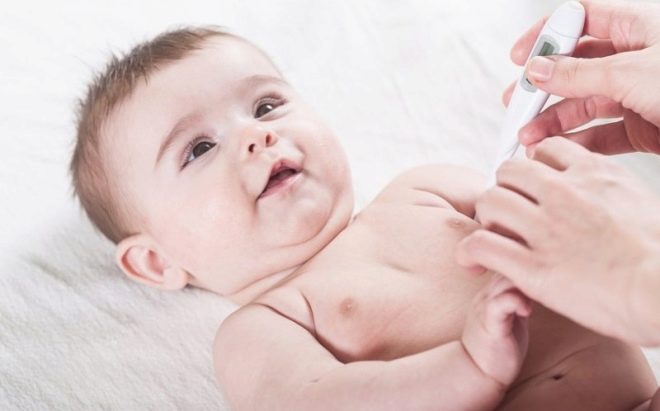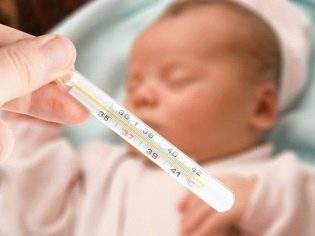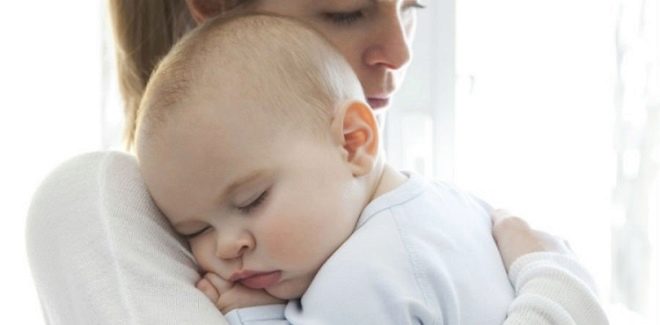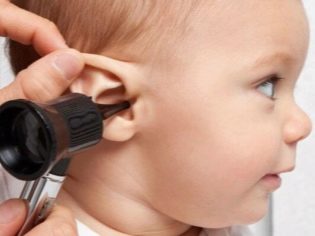Symptoms and treatment of flu in infants and children up to 3 years
Schoolchildren and even older preschoolers may well tell their parents what and how they hurt. Infants and toddlers of young age do not have such opportunities, and therefore parents can not always recognize the flu and take the right measures. In this article we will describe how to determine the flu in infants and children up to 3 years old, as well as how to treat the baby.
What it is
Influenza is caused by specific influenza viruses, therefore this disease is conditionally related to ARVI. The disease is an acute respiratory disease that is caused by the penetration of the virus into the upper respiratory tract. The influenza virus is very aggressive, it constantly mutates, and therefore it is rather difficult to cope with it, besides, the virus is extremely infectious.
A feature of the disease in early childhood is the selectivity of viral attack.. According to the observations of doctors, the newborn has significantly less chance of catching the flu than a baby in 2-3 years. This is due to the fact that during the first six months the child has passive (innate) immunity, which he inherited from the mother - a certain amount of antibodies to common viruses, the mother sends to the child during his fetal development with blood. A lot of antiviral antibodies are also found in breast milk, and therefore the baby, who is breastfed, is better protected in the face of a virus threat than the artificial baby.
The presence of innate immunity, however, does not guarantee that the child can not get the flu in the very first months of life. If the "walking" strain in the season is mutated, then, quite possibly, the mother’s immunity has not yet had time to develop antibodies to him, and therefore the baby also did not get it.
Influenza virus is transmitted by airborne droplets. The source of infection is the sick person, even if the disease is easy and he suffers it, as they say, "on his feet." For young children, the flu is considered one of the most dangerous ailments, because their immunity has not yet been fully formed, it has far fewer opportunities to give a decent immune response to the invasion of the virus.
Influenza at an early age is dangerous because of its terrible and serious complications, which can be fatal or irreversible pathological processes in the body of the baby.
Symptoms and signs
From the moment the virus is infected until the first symptoms appear in the baby, it can take from several hours to 1-2 days. The incubation period for influenza in babies up to 2.5–3 years is always significantly shorter than in older children. The virus primarily affects ciliated epithelial cells in the upper respiratory tract. And only when the dying epithelial cells begin to exfoliate, the virus enters the bloodstream and spreads throughout the body, causing the familiar classical symptoms of everyone –– aches, fever, headaches and muscle aches.
The immunity of the child will gradually form antibodies, this process takes about 3-5 days, after which the flu symptoms begin to disappear, because viral particles are destroyed by immune cells.
If a baby is sick, it is very difficult to determine the flu, because the baby cannot complain of a headache or muscle pain, cannot tell his mother that he has sore throat. The following symptoms may indicate the onset of influenza infection:
- the child has a high temperature - the heat can reach values of 38-40 degrees;
- the baby is capricious, he is sluggish and sleeps restlessly;
- anxiety during eating may indicate nasal congestion - the baby takes the breast, but almost immediately throws it and begins to cry;
- baby eyes watery.
Even at the very initial stage, a child under the age of 6 months may become very pale, high fever can lead to impairment of the baby’s consciousness, short-term unconsciousness, convulsions. Starting from six months, quite frequent concomitant symptoms of intoxication caused by the virus in the blood are vomiting and diarrhea. For children from 10-12 months and older, the flu is characterized by a dry cough.
The nose of the baby with the flu almost always remains dry, liquid snot does not stand out, but this does not mean that there is no congestion and itching in the nose. The baby can often sneeze, the child will try to scratch his nose for a year, not realizing that the sensation comes from within.
Certain age categories of babies have their own symptomatic pictures of influenza infection. So, in babies from birth to half a year, all the symptoms look somewhat erased, it is very difficult to recognize them. The onset of influenza infection in them is not as sharp and acute as in older children.
Regardless of age, most often the first signs of flu appear at night. The child wakes up and the mother discovers his fever, shortness of breath, a violation of nasal breathing. In children under 3 years of age, the flu is always more severe than in other children. Quite often, severe, toxic and hypertoxic forms of the disease are recorded.
Treatment
No self-treatment for flu in a baby, a one-year-old baby, or a three-year-old child cannot even be thought. Given the weakness of immunity, the likelihood of complications is too high and, alas, too real. When the first signs of flu appear, parents should immediately call an ambulance. Not a doctor from a polyclinic who is not familiar to a physician living next door, but an “ambulance”, because severe and toxic forms of the flu can lead to a quick death of a child.
Treatment of influenza in children under 3 years old is taken in a hospital. The reason is the same — the likelihood of complications is so great that no sensible doctor will take responsibility for the life of a child who has stayed at home. Only round-the-clock observation in the hospital will help protect the child from the development of extremely negative consequences.
The child’s treatment regimen includes detoxification therapy, symptomatic treatment, and a rehabilitation period.
The first task of physicians is to prevent the development of convulsive syndrome. The child will be reduced in body temperature with antipyretic agents in candles, and if paracetamol-based drugs do not act, special formulations will be administered intramuscularly to the baby — mixtures of Papaverine (for muscle relaxation), Suprastin (for relieving intoxication and sensitization) and Analgin "(for pain relief of head and muscle sensations).
At the same time, it is important to prevent dehydration, which in infants develops rapidly on the background of temperature, especially if it is accompanied by vomiting or loose stools. A child older than 2 years can theoretically drink himself; younger children inject intravenous saline and vitamins in the hospital.
Antiviral agents are effective only at the earliest stage of the disease. For babies can use drugs direct antiviral effects in injections. Widely publicized "Anaferon", "Viferon", "Immunal»And other means do not possess the efficiency proved in clinical conditions, many are homeopathic, and therefore their use from a reasonable point of view is inexpedient.
Antibiotics are prescribed for a child only if complications begin. Some doctors try to work ahead of the curve and prescribe antibiotics immediately, fearing not to recognize the complications in time.This position only increases the likelihood of negative consequences.
Complications
Influenza virus in itself can not harm the child, but should be afraid of those complications that cause influenza infection. Reduced immunity, besides fairly “battered” by the flu, is a favorable soil for the accession of a secondary bacterial infection, fungal infections. Most often, babies have complications in the respiratory organs - bronchitis, pneumonia, a 1.5-2-year-old child is more likely to develop croup and acute respiratory failure associated with it.
Children from birth to 3 years who have the flu are more likely to have complications in the ears (otitis media, neuritis of the auditory nerve, hearing loss), conjunctivitisbacterial rhinitis sore throats, pharyngeal abscess, meningitis and meningoencephalitis.
In the acute stage of the disease, febrile seizures develop on the background of high temperature, asphyxia as a result of vomit in the respiratory tract, if the child is sick in a dream. Often, babies develop hemorrhagic syndrome - a violation of the integrity of the vascular walls with the appearance of microcircuits.
Influenza can "strike" on the health of the kidneys and heart of a child, leading to glomerulonephritis, acute renal failure, and inflammation of the heart muscle. For an infant, the flu is also dangerous because it often causes serious disturbances in the functioning of the nervous system.
The probability of complications during and after influenza in children from 3 years of age is generally estimated at 15%, in infants complications occur about three times more often. Stronger than others can suffer premature babies, babies born with systemic diseases or pathologies of the immune system, disorders of the central nervous system, pathologies of the heart, kidneys and liver. In such children, the probability of complications from the flu is estimated at about 60%.
Protecting your baby from a dangerous viral respiratory illness will help the proper prevention and responsible attitude of parents to precautions - It is important at all costs not to infect the infant. To do this, in the seasons of increased incidence it is not worth visiting clinics with him, you do not need to take the child with you to the shops, to carry in public transport.
For walks, it is best to choose secluded places where there are not a lot of people.
A quick reaction of parents will help to reduce the likelihood of complications - on-time emergency ambulance increases the chances that the baby will recover from the flu without serious complications.
In the next video, Dr. Komarovsky will answer all the parents' questions about the flu and its treatment.



















